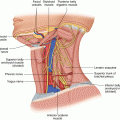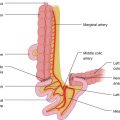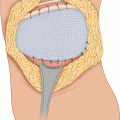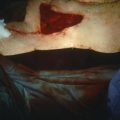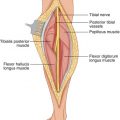(1)
State University of New York at Buffalo Kaleida Health, Buffalo, NY, USA
In debilitated patients with low preoperative albumin and long abdominal incisions, retention sutures are often advisable, but surgeons generally avoid them because in order to bring the fascia together, they have to tie the sutures tightly. The postoperative result can be ulceration of the skin and pressure necrosis, with infection and a painful wound. Retention sutures in midline incisions must be tied tightly because often the skin protrudes more medially than the underlying fascia, which tends to retract away from the line of closure. Therefore, when the retention sutures are placed in a through-and-through manner, the skin edges come together first and each suture must be tightened further in order for the fascia to come together.
Figure 22.1 shows the use of sutures where the through-and-through suture is placed with the fascia edges slightly retracted so that the retention suture has to be tied tightly in order to bring the fascia together. If one places a clamp (such as a Kocher clamp) on the fascia and pulls it toward the center of the incision, the suture can be placed through the skin, subcutaneous fat, and then the musculoaponeurotic layers in a way that would transfix the edge of the fascia in a more medial position (Fig. 22.2).
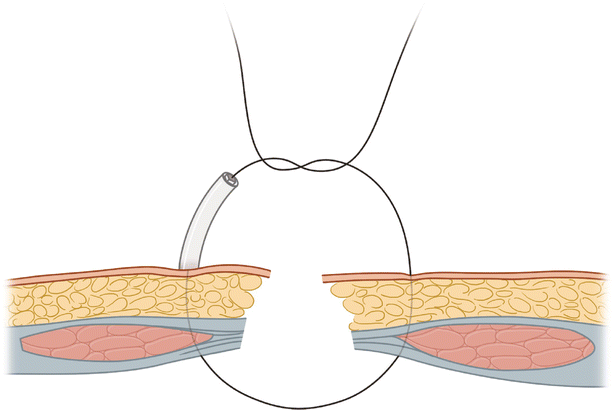
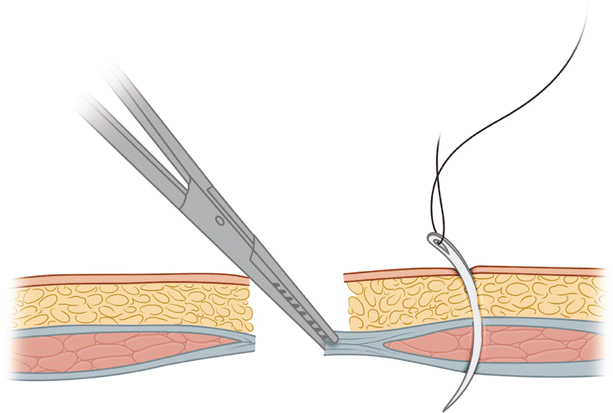

Fig. 22.1
Retention sutures placed with the fascia in a retracted position can lead to pressure necrosis and ulceration because they must be tied tightly in order to approximate the fascia, thus compressing the skin

Fig. 22.2
When using a through-and-through suture, the situation improves when the fascial edge is pulled toward the midline and transfixed in this location, allowing fascial approximation without excessive compression of the skin
Using a far-near–near-far type of suture in placing retention sutures allows the edges of the fascia to come together first, however. Then the retention suture can be tied lightly, without compressing the underlying skin and subcutaneous fat. As the needle of the retention suture is placed on the skin, it is displaced laterally as the skin is engaged, to retract the skin away from the center of the closure (Fig. 22.3). Similarly, as the suture is about to traverse the layers of the opposite side, with the fascia pulled toward the midline, the skin is retracted laterally, using the fingers of the nondominant hand, so that it will be transfixed as the suture goes through in a laterally retracted position.
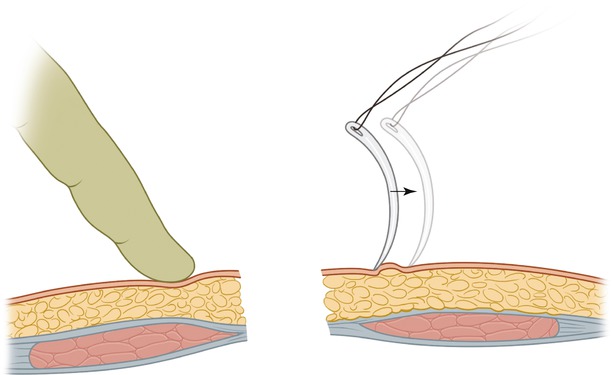

Fig. 22.3




The needle engaging the skin is moved laterally before it goes through the rest of the layers, transfixing the skin in a slightly more lateral position. The arrow indicates the lateral movement of the needle before penetrating the abdominal wall tendancy to separate the skin edges
Stay updated, free articles. Join our Telegram channel

Full access? Get Clinical Tree




